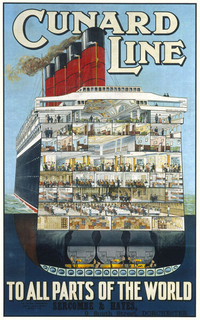
Back النزوح السويدي إلى الولايات المتحدة Arabic Emigración sueca a los Estaos Xuníos AST Udvandringen fra Sverige til Nordamerika Danish Schwedische Auswanderung in die Vereinigten Staaten German Sveda elmigrado al Usono Esperanto Inmigración sueca en los Estados Unidos Spanish Émigration suédoise aux États-Unis French Emigrasi Swedia ke Amerika Serikat ID Zweedse emigratie naar de Verenigde Staten Dutch Imigração sueca nos Estados Unidos Portuguese

During the 19th and early 20th centuries, about 1.3 million Swedes left Sweden for the United States of America. While the land of the American frontier was a magnet for the rural poor all over Europe, some factors encouraged Swedish emigration in particular. Religious repression and idiosyncrasy practiced by the Swedish Lutheran State Church was widely resented, as was social conservatism and snobbery influenced by the Swedish monarchy. Population growth and crop failures made conditions in the Swedish countryside increasingly bleak. By contrast, reports from early Swedish emigrants painted the American Midwest as an earthly paradise.
According to Joy K. Lintelman, mass migration from Sweden to the United States unfolded in five distinct waves between the 1840s and 1920s. Within this period, hundreds of thousands of Swedish emigrants made their way over and settled in both rural and urban scapes of the United States. Factors which brought migration to a trickle were found on both sides of the Atlantic, with restrictions on immigration placed in the United States and improving social and economic conditions in Sweden being the primary factors.[1]
Swedish migration to the United States peaked in the decades after the American Civil War (1861–1865). By 1890 the U.S. census reported a Swedish-American population of nearly 800,000. These rising emigration rates caused great concern in Sweden. However, before any reform could be done to avoid a continuous flow of Swedish citizens fleeing the home land, World War I (1914–1918) broke out and effectively ended the process. From the mid-1920s, there was no longer a Swedish mass emigration.
- ^ Lintelman, I Go to America, 71-74.